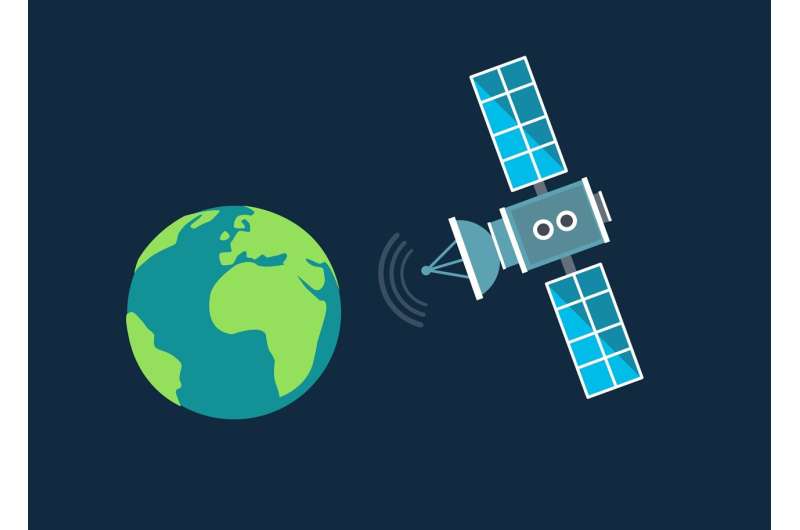This article has been reviewed according to Science X's editorial process and policies. Editors have highlighted the following attributes while ensuring the content's credibility:
fact-checked
proofread
Satellite texts help when farm advisors unavailable

Digital tools such as satellite text alerts are helping Africa's smallholder farmers to increase productivity, even when there is a lack of on-the-ground farm advice, according to Daniel Elger, CEO of the Centre for Agricultural Biosciences International (CABI, the parent organization of SciDev.Net).
"Together, we've seen that innovative digital decision support tools, digital communication campaigns and digital learning can address limited on-the-ground agricultural advisory and extension services and help farmer productivity," Elger tells SciDev.Net in an interview on the sidelines of the Africa Food Systems Forum in Dar es Salaam, Tanzania.
CABI, an intergovernmental organization, has developed digital early warning systems to alert smallholder farmers about likely pest attacks and to provide farmers with advice on how to respond.
The Pest Risk Information Service (PRISE) developed by CABI with other collaborators, uses satellite earth observation data combined with climate change data and pest development models to provide clear advice to farmers delivered by text message on when to intervene to protect crops.
The Food and Agriculture Organization of the United Nations (FAO) estimates that annually up to 40 percent of global crop production is lost to pests, fanned by the effects of climate change.
Each year, plant diseases cost the global economy over USD$220 billion, and invasive insects at least US$70 billion, according to the UN body.
Drones
During the last major locust invasion in the Horn of Africa, CABI worked with FAO and pioneered the use of drones for applying so-called biopesticides—pesticides based on naturally occurring substances. The organization also developed Green Muscle, one of the important biopesticides now in use against locusts.
The organization has developed a number of digital tools, mainly under its global PlantwisePlus program, which provides information on crop diseases to farmers. These include the Crop App Index for cutting through to the apps that are valuable, and the BioProtection Portal, which provides information on nature-based crop protection products.
However, there exist barriers that prevent smallholders from accessing and effectively using emerging technologies to improve agricultural productivity and protect against the changes that are happening as a result of global warming, known in the industry as climate resilience.
"Lack of access to financial and human capital, other resources, inputs, land tenure that would foster long-term investment are key," Elger explains. Other barriers include structural inefficiencies, intrinsic environmental limitations, logistical challenges and market access.
"These factors mean smallholders are vulnerable to challenges, crises and shocks—and have an understandable and necessary aversion to risk-taking as they often can't tolerate or absorb financial losses," Elger says.
Information and skills deficits, poor public advisory services, and gender inequity also prevent uptake of technology by smallholders.
"Studies show that women have less access to innovation and technology and are more vulnerable to climate shocks than men," Elger says. "They produce 20–30 percent smaller crop yields than men due to their lack of access to and control over resources.
"Driving the adoption of productivity-enhancing innovations and technologies by women and youth farmers, applying a targeted approach to their development, dissemination and promotion to reduce gender inequality, has great potential to deliver productivity gains, given the evidence for current gender differences in productivity."
However, he also cautions that technology isn't always the answer.
"Tech has a really important role, but is not always the solution," says Elger. "In the case of advisory approaches, especially in rural areas where connectivity is poor and in contexts where data and device costs are relatively high."
The important goal is to listen to the farmer in order to increase the number of climate-change induced changes that farmers can physically control, reduce or mitigate—and to find innovations that will support the farmer to achieve that control, he says.
"That is key to agency and to avoid farmers feeling like passengers in the adaptation process."
Provided by SciDev.Net





















